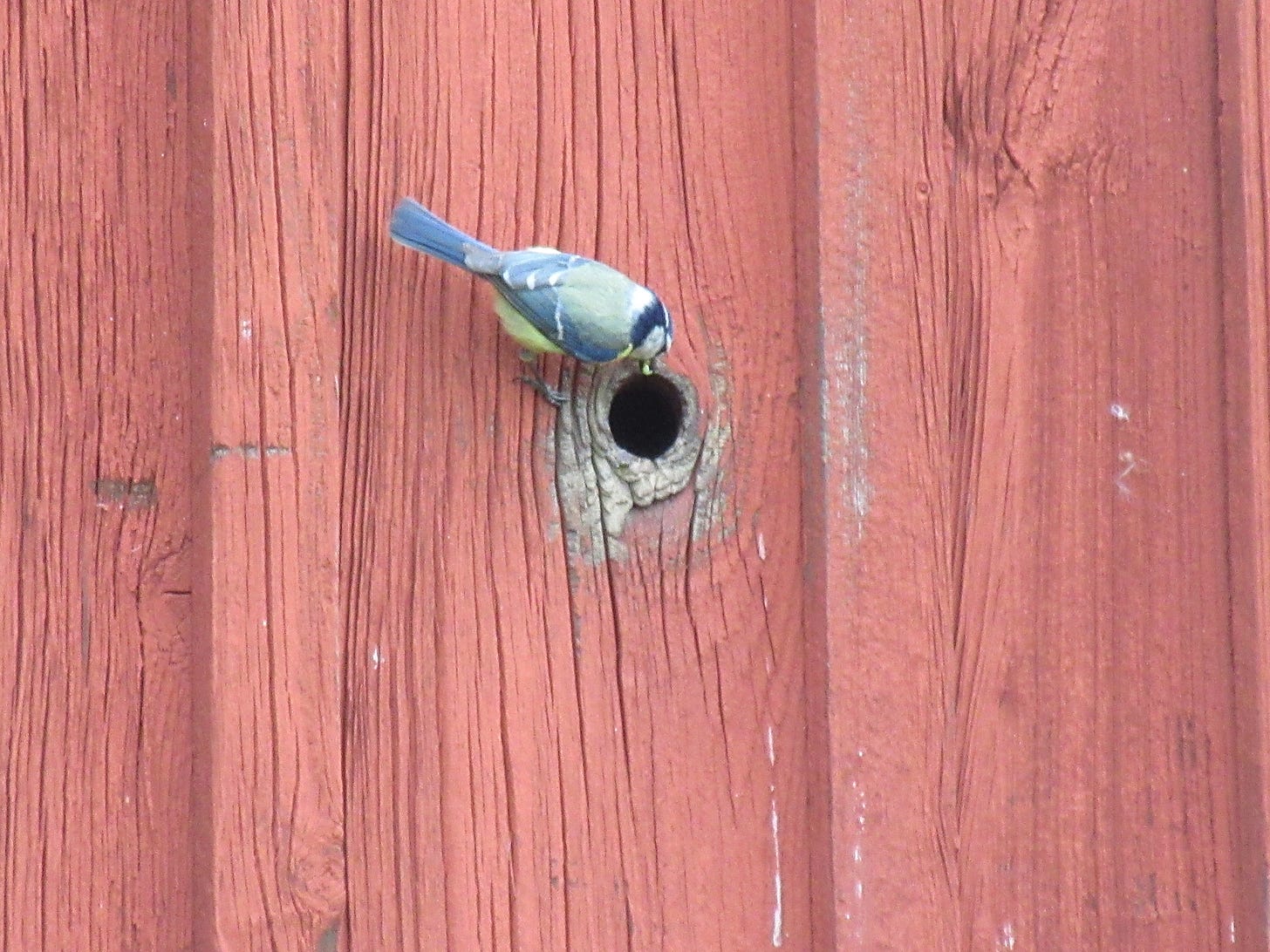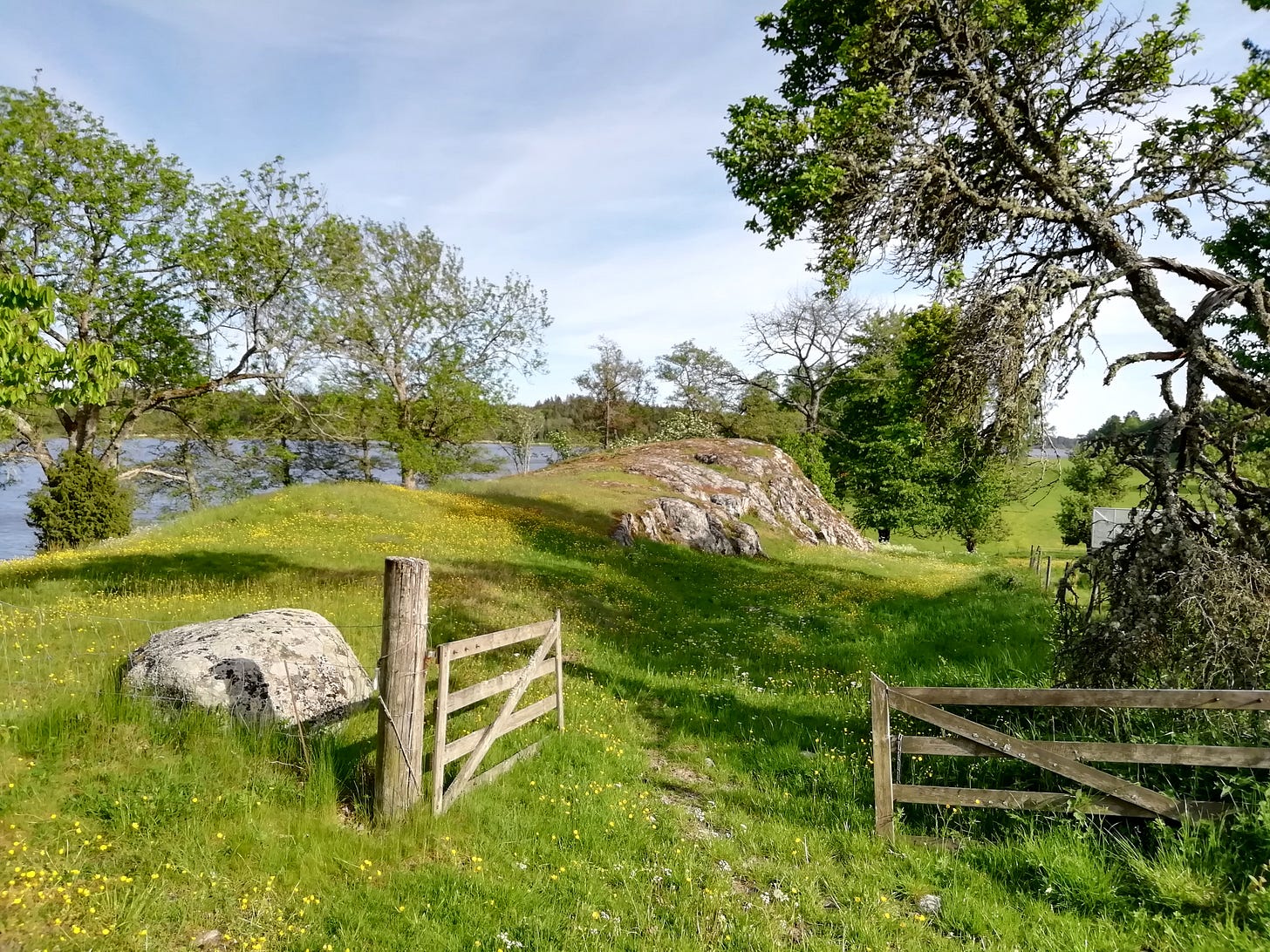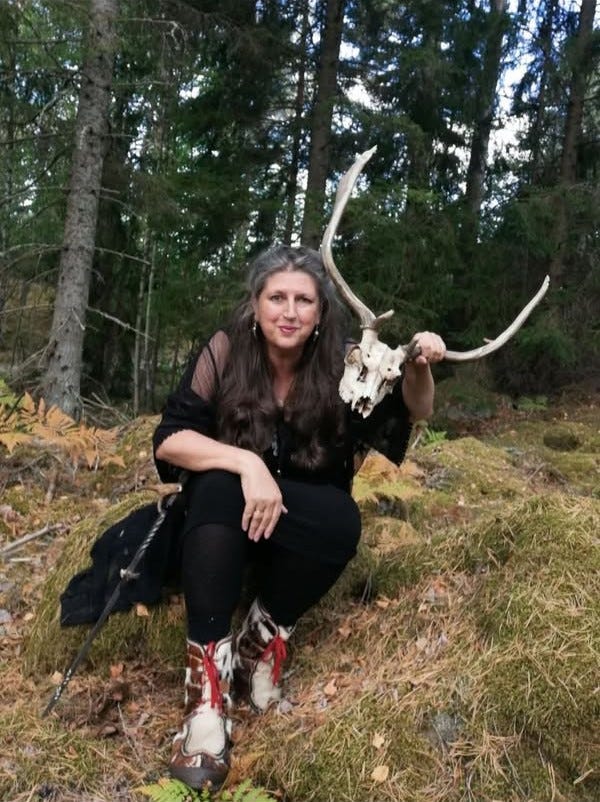GENIUS LOCI - The Spirit of Place
The difference between Spirits of Place and Domestic Deities
“A house is much more than a building. It is a microcosm, a living being, with both a body and a soul. It speaks, even if its language is only creaking and cracking noises for the profane.” Claude Lecouteux, The Tradition of the Household Spirits (2000), p.4
My previous two posts about recruiting, and working with, House Spirits or House Gods clocked up an impressive number of views (to my pleasant surprise). I am thrilled that interest in such matters is on the rise, so today I will return to this subject. We will look at the the difference between spirits of place and house spirits (or even domestic deities).
If you need to catch up or refresh, here are the links for the previous essays:
#1 INVOCATION FOR RECRUITING A HOUSE SPIRIT
House spirits (also known as house gods) live inside houses (or outbuildings and barns) and watch over livestock, human comings and goings, working animals and pets etc. Spirits of the Land or Spirits of Place are connected to land and found outdoors. That little park in your city will have spirits of place (who will be grateful if you pick litter or perform other small caretaking tasks). Vast national parks teem with spirits of place (such as Yosemite, the Grand Canyon, Yellowstone in the US), as do other wild places: Greenland, Patagonia, the Sahara Desert, the Himalaya Mountains etc.
A good home owner (or tenant) pays close attention to both types of spirits and pays close attention to both. When students arrive (from all over the world) here at my Forest School in Sweden, I always invite them to go out on the land, make offerings and connect to the spirits of place, as part of our opening night. I also tell the spirits of place exactly when the students will arrive and what we are going to studying. I ask for their blessing their guidance and I ask for us to work in harmony with them. (This has never failed yet. They always get a stupendous welcome with unbelievable animal sightings and interactions, such as wolves howling, and leave feeling like an expanded version of themselves.
My main source for this essay is, once again, Claude Lecouteux (abbreviated to CL henceforth) and his excellent book: The Tradition of the Household Spirits (2000). After a quarter of century spent studying folk beliefs, he concludes that in many locations the tradition of household spirits survived well into the 20th century (not paying attention to them is a recent trend, not the ancestral way!) Not only that, but the material collected by researchers and ethnologists is coherent and consistent across locations (always a good sign that spirits are at work!)
Some of you have asked me (after reading my previous two posts) why our ancestors (previous inhabitants) often chose to stay around and keep an eye (after death). CL says that this is because it is where their bones were buried and the house still holds the memories and habits of their (human) existence:
The house resembles a tracing of a human life; all the major moments of [human] existence, from birth to death are connected to specific places. CL p. 5
Churches have their own in-dwelling spirits (the kirkegrim in Danish, kyrkogrim in Swedish and Kirkonväki in Finnish). This being is known as the church grim in English!
Here I am going to insert another concept from early and tribal cultures: a functional house is a like a human body. It has a heart, limbs, lungs, kidneys, ears and eyes and so forth. I often work with this principle in our house: I walk around, check in with the overarching or presiding spirit of the house (in our London house that is an elderly lady called Keziah) and check whether she is breathing, contented and feeling valued. I read her moods and emotions. I talk to her and ask what she needs! (My students talk to her too and bring her small gifts).
When problems occur I ask myself: is this a breathing problem (air), a bladder problem (water), a stomach (digestion) problem? What is the spiritual work I need to do to resolve the block or issue?
This is also (somewhat) connected to feng shui (which literally means wind-water, as I discovered when I was studying Mandarin Chinese!) For instance, in London I am acutely aware that in our house the staircase represents the lungs and airways, so (as a person with mild asthma) I keep those free of clutter and obstructions so our house can breathe! I also open doors and windows daily to replace stale air. (Most medicine is not sourced from a pharmacy!)
Feng shui is a metaphysical practice of understanding your place in the world as inspired by five principles or elements in Taoism. The five principles of feng shui are based on the cycles of nature: fire, earth, metal, water, and wood. The desired result is creating harmony in your life and spaces. SOURCE
There are many modern ways of working with this (the concept of a tomte might not suit everyone!)
But back to CL! He explains that in Sweden it was necessary to request permission from the earth spirits (jordvättarne) to build anything. It was equally important to avoid offending them! Now think for a moment of, what is referred to as, “grey belt sites” in the UK (previously developed land or plots with minimal environmental or historical significance). That is land earmarked for future (or even imminent) development (e.g. housing estates).
What is not taken into account is that those “grey” places are not grey at all. Spirits live there too. Not only that, but the spirits of place hold the memory of what this land used to be in earlier times (perhaps lush agricultural land before pesticides were invented). For diggers and big machines to just show up one day, pour down concrete for the foundations and start building) is traumatic and disrespectful for the spirits of place. They might not only be offended (and act out, play tricks, tamper with equipment), they might end up displaced altogether!
CL offers some “litmus tests” in his book.
Places were people lived before are generally good for building a homestead.
Places where the inhabitants had enjoyed good fortune are particularly auspicious.
So are places where a coin has been found.
Or places where animals naturally lay down or rest.
Any border between fields was to be strictly avoided, because spirits and genies (the plural of genius, genii in Latin) prefer living in edgy (liminal) places and nowhere lands, “Between Places”. The strip of land that forms the boundary of your property and your neighbour’s land. The corner of a field where the harvester doesn’t reach. So those are good places to go, to commune with the spirits of place!
Oh and crossroads are to be avoided at all cost! (They are also sites where people used to perform darker forms of magic and witchcraft or perhaps some still do until today). Not to mention former cemeteries (you don’t want your homestead to be a ghost town!) For the same reason our ancestors used to avoid places where someone had committed suicide or where animals used to be slaughtered, because “death is contagious” (which is a topic in its own right!)
My main reason for writing these essays is making more individuals aware of these beings and issues (and based on the feedback received that appears to be working, which is great!) The next level (much harder!) is getting powerful groups in society (builders, property developers, landscapers, architects etc.) to understand these matters, so certain protocols are observed before building occurs. I have said before: this is in everyone’s interest because there will be less mishaps, accidents, delays and other annoyances if building (or restoring, refitting or repurposing) occurs with the cooperation of house gods and the spirits of place (genii loci).
I will close on a sweet note: one of my long-term students would always arrive bringing a basket full of (what she called) “offerings for the house gods”. Those “gods” being our children, in this scenario. She’d bring them chocolate and treats to thank them for cooperating with students spending so much time in our/their house. Yes Katharine Haworth, that is YOU and they will never forget this! It worked. This particular set of “three blond house gods” felt suitably honoured and was willing to cooperate with more house and kitchen sharing in the future!
Spirits of place respond in a similar way to such gestures of goodwill.
I try (but sometimes fail) to get out at least one essay a week (sometimes more), due to travel, international teaching commitments and family care responsibilities (our family lives with Alzheimer’s and I have written several posts about that). If you would like to see regular posts about about Nordic spirituality and my life as a Forest Witch (and of course short videos of all the wildlife here!), please follow me on Instagram or Facebook, thank you! All artwork and pictures are my own, unless explicitly credited to a different source.
Imelda Almqvist, Forest House and Forest School, Sweden
Picture: The Forest Witch in her Element!
WILD WOMAN BIO
Imelda is happiest in the Far North (especially places where polar bears roam!) She was born in the Netherlands but Sweden and Greenland are the places her soul calls home. She loves playing her cello in the forest and her swan bone flute by the Baltic Sea. One of her more unusual spiritual practices is taking her skulls for a walk.
She has taught on nearly all continents (but is still waiting for invitations from Australia and Antarctica!) She has performed ceremonies with groups under the Dark Sky in Chaco Canyon (New Mexico), under the Northern Lights in Greenland and on grave mounds in Sweden. Her groups have spent time with rock art in Spain and been sent on pilgrimages in London and Switzerland. Imelda has also taught slum children in Lima (Peru) and worked in a field hospital in Bangladesh.
Imelda is obsessed with languages and dips in and out of 23 languages when she does research and writes her books. She likes reading dictionaries before she falls asleep.
Imelda is a Daughter of Baba Yaga. She is a Pregnant Hag, who roams the Forest at night and lives in a Gingerbread House by day. She writes a dream diary every morning, makes a daily painting (or drawing) and always writes a poem before she falls asleep. She recently took up wild swimming (and enjoyed swimming with wild swans!) but fell off a cliff because she is a little accident-prone. Imelda’s life is never boring!
Website:
http://www.shaman-healer-painter.co.uk/
YouTube Channel: youtube.com/user/imeldaalmqvist
Online School: https://pregnant-hag-teachings.teachable.com/courses/
Facebook: https://www.facebook.com/imelda.almqvist/
Instagram: https://www.instagram.com/almqvistimelda/









Thank you Imelda. Be well.
Dear Imelda, as always, your topics land in the perfect moment.
I’ve been working with the land and house of my parents. My parents are both gone now and neither of their daughters want to remain in the house.
It is really an ancestral place. My father’s maternal aunt lived there and as a boy he always dreamed of living there. He made his life’s dream come true.
I did return but do not feel this as my place anymore, so „the house is on the market“ for about a year now.
I’ve talked to land and house spirits, explaining. Performed ceremony to recall my own connection. A ceremony for a person who lay buried, unacknowledged.
Still.
With every ceremony/ smudge on my part, things start to move - for a week. Then it settles. Falls flat. What is this.
This morning I was talking to a friend about it and she suggested to talk to the house again. What does it need - and while we were chatting, your article landed in my inbox.
I read it.
The various name of house spirits in different traditions.
Tomte. Nisse.
KOBOLD
I’m doing a sales training right now with a German, family owned business (140 years of tradition) which sells high end vacuum cleaners.
Called … wait for it. …..
KOBOLD
cannot make this stuff up.
Kobold. House spirit. Sales training.
In so many dimensions!
🤣
I give thanks for your wisdom which is shared so freely and arrives so timely!